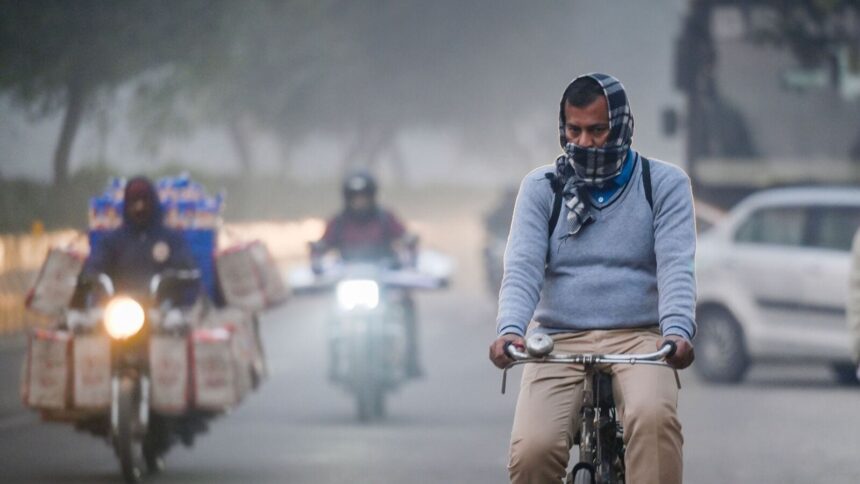Under the First-Past-The-Post (FPTP) electoral system, the candidate who garners the most votes in a constituency is declared the winner, even without achieving an outright majority. In a contest with multiple parties, this can lead to scenarios where a candidate triumphed with less than 30% of the votes — a situation where 70% of the electorate did not support them. The candidate who finishes in second place, despite receiving 29% of the votes, gains no corresponding legislative power as the principle of ‘winner takes all’ prevails.
In contrast, proportional representation (PR) systems aim to distribute seats based on the percentage of votes acquired by each party. When analyzed at the state or national level, FPTP’s flawed conversion of voter preferences into actual seat allocation creates conditions that often ignore broad public goods. The electoral outcomes in Delhi over the past twenty years illustrate this issue quite well.
Seat share versus vote share
Ideally, a representative democracy would align the distribution of seats closely with the vote shares of parties. However, FPTP elections often misrepresent voter preferences, leading to a significant disparity from proportional representation. In the last four elections in Delhi, winning parties secured a disproportionately high number of Assembly seats relative to their actual vote share.
For instance, in 2020, the Aam Aadmi Party received merely 53% of the votes but won 62 out of 70 seats, achieving nearly 90% of the seats. On the other hand, the Bharatiya Janata Party (BJP) managed to capture 38% of the votes, yet only secured 11% of the seats. This phenomenon is not unique to Delhi; it is prevalent throughout India. In populous states like West Bengal and Uttar Pradesh, similar trends can be observed. Even at the Lok Sabha level, minor changes in vote share can lead to significant seat allocation shifts, impacting policy outcomes. For example, in the 2024 election, the BJP experienced only a slight decline of 0.3 percentage points in its vote share from 37.2% in 2019 to 36.9%, yet its seat share plummeted by 11.4 percentage points to 44.1%. This indicates that targeting merely 0.3% of the voter base was crucial for many constituencies.
The FPTP system favors larger, well-resourced parties, allowing them to convert votes into seats more effectively. Over time, this dynamic can result in a more consolidated political landscape, where smaller parties resort to focusing on limited voter segments to enhance their chances of winning. Additionally, voters may consider votes for smaller parties as ‘wasted’ and thus choose to support larger parties instead, despite having strong alignments with smaller factions.
Also Read:
Fuel for ‘clientelism’
Research indicates that FPTP can foster clientelism and vote-bank politics. When a candidate ascends to power with less than half the electorate supporting them, they are more inclined to cater to their specific interest groups rather than the average voter.
In his 2024 publication Accelerating India’s Development, economist Kartik Muralidharan argues that FPTP perpetuates a cycle of vote-bank politics and diminished capacity of the state. He cites the example of Lalu Prasad Yadav and Rabri Devi’s leadership in Bihar during the late 1990s and early 2000s. Despite widespread perceptions of inadequate governance, their party efficiently delivered benefits to its core base of Yadav and Muslim voters. Over time, as state capacity weakened, the party found that its most effective strategy to secure victory was to funnel resources to its vote bank instead of addressing broader public issues, Muralidharan explains.
The electoral system also influences voter preferences. A household study in West Bengal conducted by economist Pranab Bardhan (2024) discovered that while voters may gain from both targeted welfare schemes (like employment initiatives, farm input subsidies, and cash transfers) and broad public goods programs, they are generally more responsive to the former, thus motivating politicians to engage in clientelism. Bardhan assesses that private benefits increase the likelihood of a household head voting for the incumbent by 13%, while the provision of public goods appears to have no impact.
Political scientist Carl Henrik Knutsen’s 2010 research suggests that PR systems globally contribute to about 1% higher economic growth compared to FPTP. He attributes this to PR’s inclination to promote broad public goods like universal education and property rights, which stimulate positive economic cycles. A study by Guido Tabellini and Torsten Persson (2004) found that legislatures elected via proportional representation allocate approximately 8% more of GDP to social security compared to those functioning under FPTP. Scholars have also pointed out that the instability resulting from the lack of continuity under FPTP can lead to frequent policy changes and a deficit in long-term strategic planning.
It might seem perplexing that politicians contesting in Delhi’s notoriously polluted air rarely emphasize the issue of smog. However, this response is a logical strategic maneuver influenced by the incentives inherent in the FPTP system. Parties tend to focus on winning over interest groups through targeted schemes, such as cash transfers for specific demographics and subsidized utilities. Issues like air pollution are likely to remain overlooked until they become priorities for voter blocs.
Also Read:
Global Transition Trends
India adopted the FPTP system post-independence primarily due to its straightforward nature, which promotes stability by ensuring that a majority or coalition government is formed, even if no single party secures majority support (the intricacies of a PR system can complicate matters). This stability was crucial for India at the time, as a fledgling democracy amid post-colonial challenges, while peer nations were drifting towards authoritarianism. Nevertheless, many believe the system may have overstayed its welcome.
The majority of countries now utilize some variant of PR or hybrid systems. According to the International Institute for Democracy and Electoral Assistance, over 35% of the 217 national legislatures employ list-based PR, compared to just 22% that operate solely under FPTP, with many others adopting mixed systems. Several nations transitioned from FPTP to PR systems throughout the 20th century, including Australia, South Africa, and New Zealand. In the largest remaining FPTP nations like the US and the UK, there is a growing desire to explore alternatives such as ranked choice voting, particularly in the context of increasing political polarization and prior electoral disputes (In December 2024, UK MPs narrowly voted in favor of a private member’s bill proposing PR, though its passage remains uncertain).
The call for electoral reform has also gained traction in India. The 170th Law Commission report published in 2015 advocated for a mixed-member proportional system, proposing a 25% increase in the Lok Sabha’s size, with the additional seats filled through PR while the rest continued to use FPTP. However, implementing reforms in this area is particularly difficult as it necessitates legislative action from those already advantaged by the FPTP system.
By 2031, India is set to undergo its first national delimitation exercise since 1971, which will likely reshape representation at the state level, adversely affecting states with slower population growth, and potentially igniting more discussions regarding the fairness of the current electoral framework. Reforming the electoral system could allow Indian legislatures to better serve the genuine preferences of their constituents, rather than being trapped in short-term strategies aimed solely at winning elections.
The author is a graduate student in policy and business at Harvard University.
Also Read:










